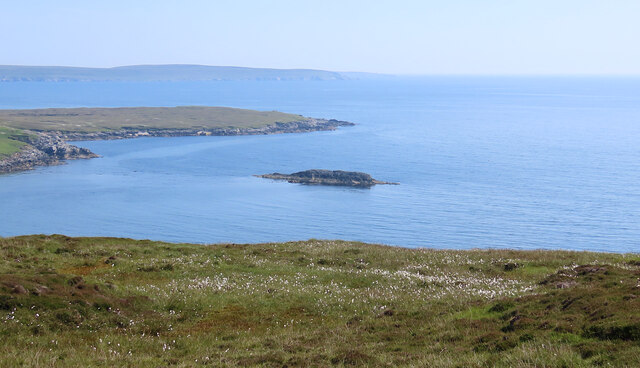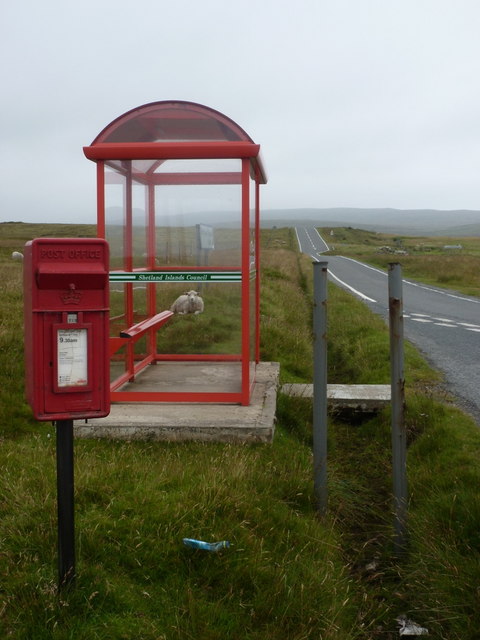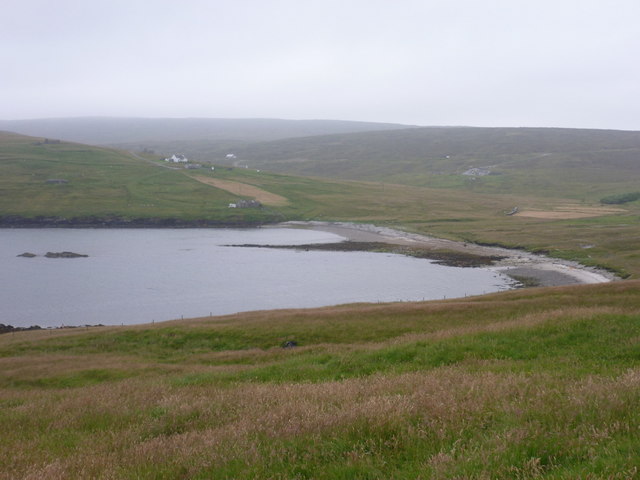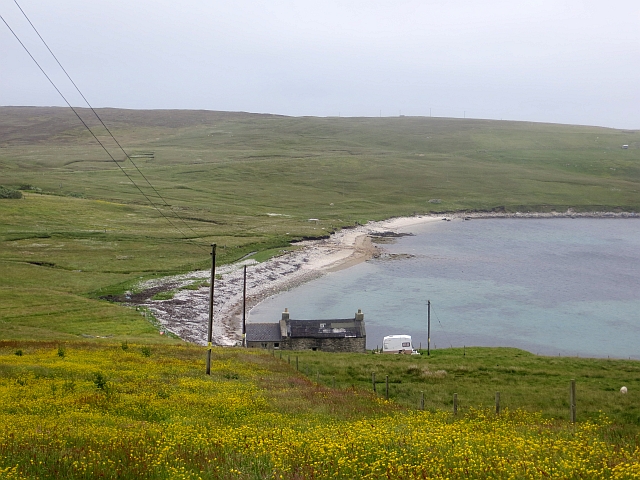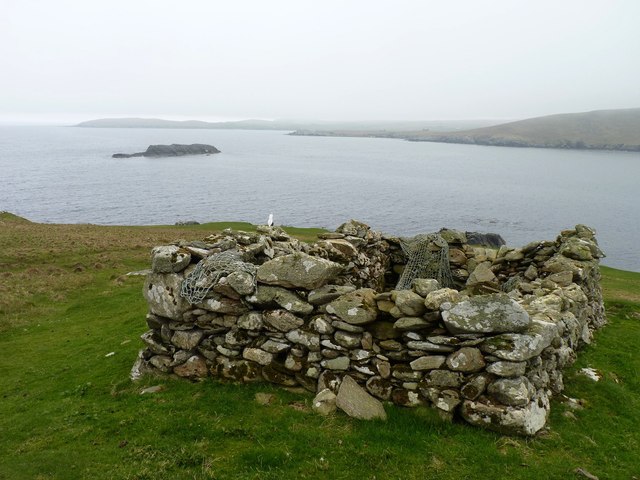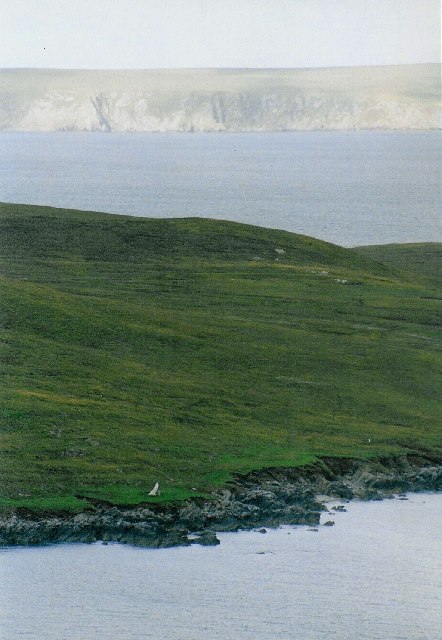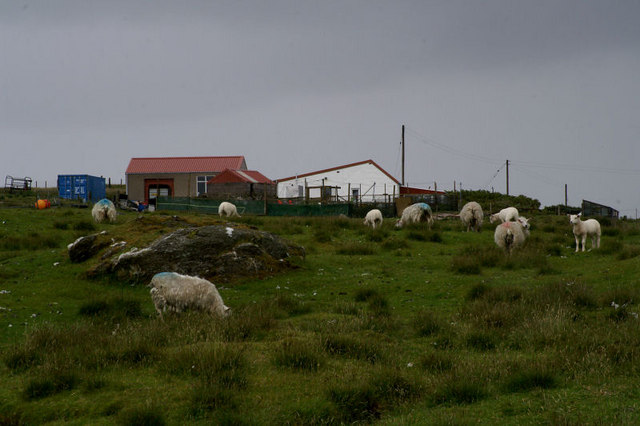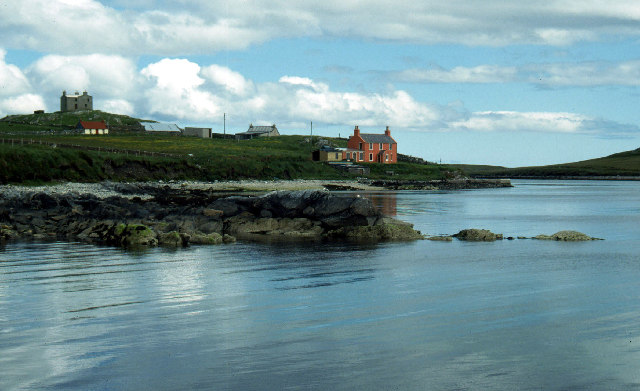Ness of Queyon
Coastal Feature, Headland, Point in Shetland
Scotland
Ness of Queyon
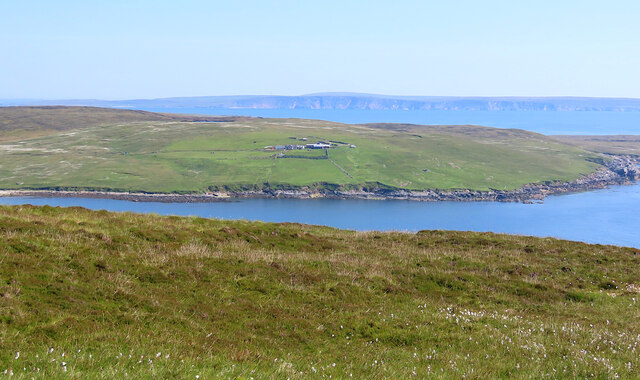
Ness of Queyon is a prominent coastal feature located in the Shetland Islands, Scotland. It is a headland that extends into the North Atlantic Ocean, forming a distinctive point along the rugged coastline. The name "Ness of Queyon" is derived from the Old Norse language, with "Ness" meaning "headland" and "Queyon" signifying the presence of a narrow inlet.
This natural formation is characterized by its steep cliffs, which rise dramatically from the surrounding sea. The cliffs are composed of sedimentary rocks, displaying layers of sandstone and shale that have been shaped by centuries of erosion from wind and waves. The exposed rocks often provide a colorful display, with hues ranging from deep reds to earthy browns.
The area around Ness of Queyon boasts a diverse marine ecosystem, attracting a variety of seabirds, such as gannets, puffins, and guillemots. It is also home to several species of seals, which can often be spotted basking on the rocks or swimming in the nearby waters.
Ness of Queyon is a popular destination for nature enthusiasts and photographers, offering breathtaking views of the surrounding ocean and cliffs. The headland is accessible via a coastal path, which allows visitors to explore the area on foot and enjoy the stunning scenery. It is important to exercise caution when approaching the cliffs, as they can be unstable and subject to erosion.
Overall, Ness of Queyon is a picturesque and geologically fascinating coastal feature, showcasing the raw beauty of the Shetland Islands' rugged coastline.
If you have any feedback on the listing, please let us know in the comments section below.
Ness of Queyon Images
Images are sourced within 2km of 60.550007/-1.0204725 or Grid Reference HU5385. Thanks to Geograph Open Source API. All images are credited.
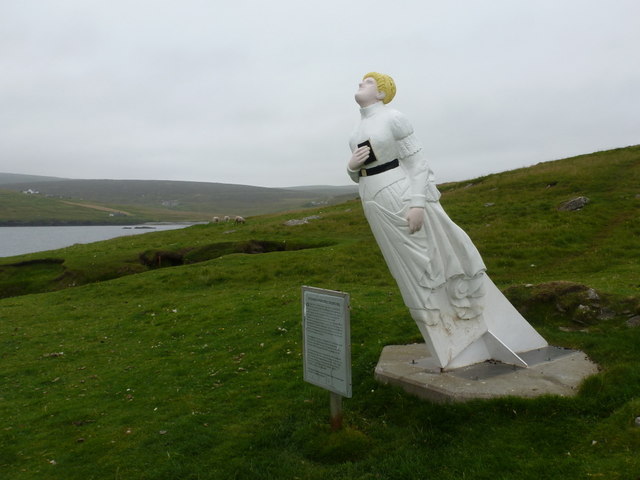
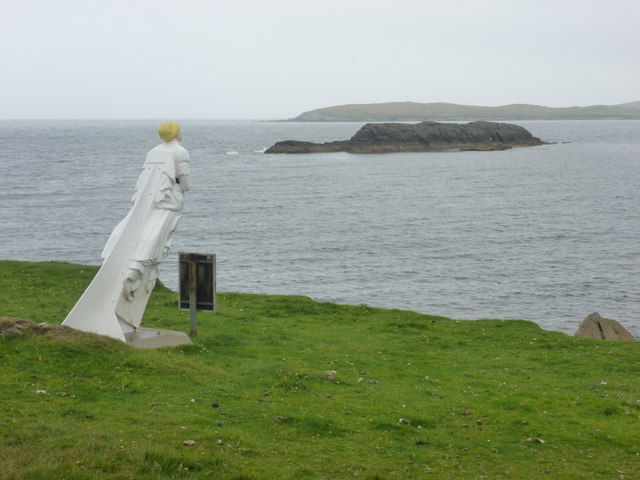
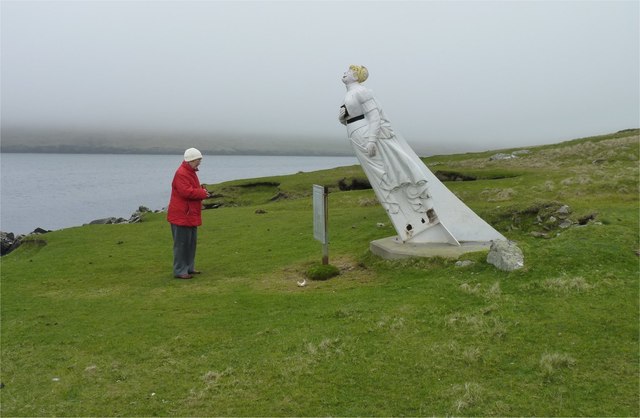
![Figurehead of the "White Wife" According to local tradition (and thus published many times) The White Wife (or White Lady) of Otterswick is said to be a German lady.
According to her life records we have to say that Bertha is a British girl or more correctly a Scottish girl, &quot;born in Grangemouth of German parents&quot;.
She was the figurehead of the steel barque Bertha built in 1892 by Grangemouth Dockyard Co., Grangemouth, as yard no. 163. Her dimensions were: 74,11×11,70×6,88 metres [248&#039;2&quot;×38&#039;4&quot;×22&#039;4&quot;] and with a tonnage of 1653 GRT (1499 NRT and 2600 DWT). She was launched at the shipyard of Grangemouth Dockyard Co. for Joh. H. Soost, Hamburg on July 6th, 1892 and assigned the official German signal RJQD.
She was named after Bertha, the eldest daughter of Joh. H. Soost, and this should be the proper name of The White Lady.
In 1899 she was sold to Captain M. Dietrich, Hamburg, and thereafter changed hands several times. In her great days until 1912 she did a lot of long distance runs such as 1904 from Lizard Point to Seattle in 154 days, 1906 from Lizard Point to Sydney in 117 days and again in 1909 in 114 days or in 1910 from Sydney to Falmouth f/o in 129 days.
In 1912 she was sold to Sweden changed hands several times and ended up with Förnyade Ångfartygs AB Viking, Gothenburg, for SEK 500.000. She was then renamed Bohus and assigned the official Swedish Reg. No. 5903 and signal KBCV. Captain at that time was Mr Ragnar Erik Nyberg, Stockholm. Bertha was bound to the Baltic Sea, mostly sailing in Swedish and Finnish waters.](https://s0.geograph.org.uk/photos/60/69/606956_9287ed4c.jpg)
Ness of Queyon is located at Grid Ref: HU5385 (Lat: 60.550007, Lng: -1.0204725)
Unitary Authority: Shetland Islands
Police Authority: Highlands and Islands
What 3 Words
///carrots.deflate.executive. Near Ulsta, Shetland Islands
Nearby Locations
Related Wikis
Aywick
Aywick is a small settlement on the east side of Yell, an island forming part of the Shetland Islands north of Scotland.The naturalist Bobby Tulloch was...
Otterswick
Otterswick is a hamlet on the island of Yell in the Shetland Islands, on the inlet of Otters Wick. It is on the east side of the island. There is also...
Gossabrough
Gossabrough is a coastal hamlet, wick and ness on the southeast side of the island of Yell, Shetland, Scotland. The Wick of Gossabrough lies between the...
Burra Voe
Burra Voe (Old Norse: Borgavagr, Broch Bay) is sheltered bay (voe) at the southeast corner of the island of Yell. The village of Burravoe (HU525795) is...
Burravoe
Burravoe is a community on the north shore of Burra Voe, in the south-east part of the island of Yell in the Shetland Islands, Scotland. The name Burravoe...
Mid Yell
Mid Yell is a coastal settlement on the island of Yell, the second largest of Shetland Islands, Scotland. Mid Yell, the largest settlement on the island...
Old Haa Museum
The Old Haa of Brough in located in Burravoe, Yell, Shetland, Scotland. Built for Robert Tyrie, a merchant, in 1672, houses the local museum for Burravoe...
Hascosay
Hascosay (Scots: Hascosay; Old Norse "Hafskotsey") is a small island lying between Yell and Fetlar in the Shetland Islands, Scotland. == Geography and... ==
Have you been to Ness of Queyon?
Leave your review of Ness of Queyon below (or comments, questions and feedback).
